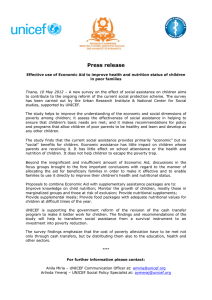UNICEF
advertisement
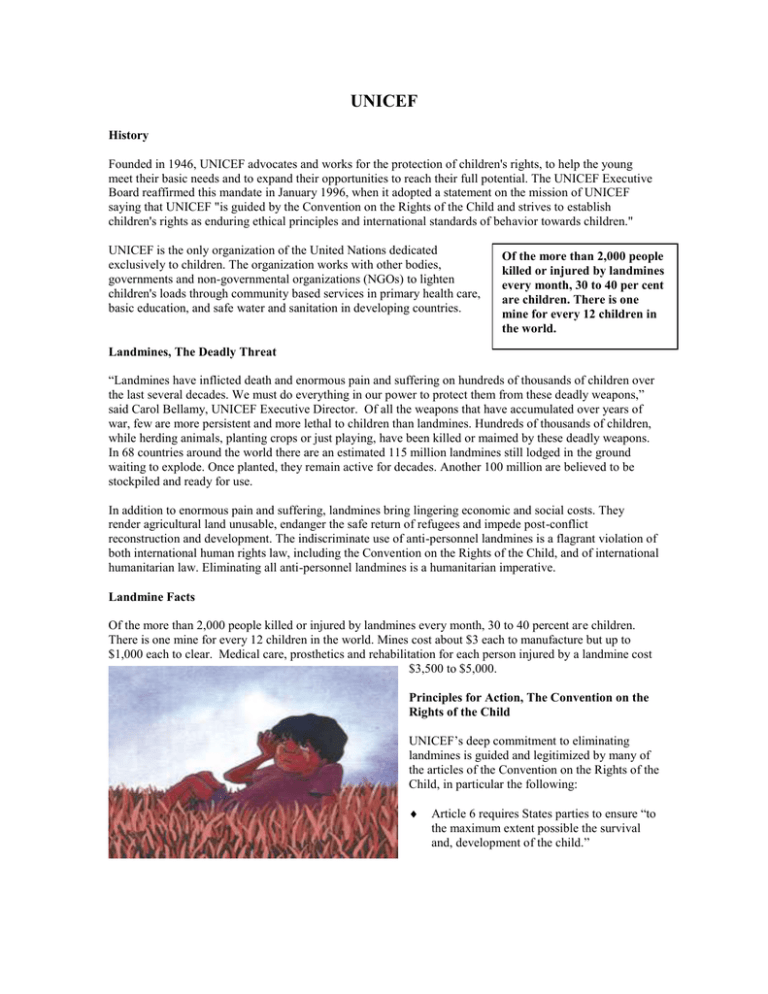
UNICEF History Founded in 1946, UNICEF advocates and works for the protection of children's rights, to help the young meet their basic needs and to expand their opportunities to reach their full potential. The UNICEF Executive Board reaffirmed this mandate in January 1996, when it adopted a statement on the mission of UNICEF saying that UNICEF "is guided by the Convention on the Rights of the Child and strives to establish children's rights as enduring ethical principles and international standards of behavior towards children." UNICEF is the only organization of the United Nations dedicated exclusively to children. The organization works with other bodies, governments and non-governmental organizations (NGOs) to lighten children's loads through community based services in primary health care, basic education, and safe water and sanitation in developing countries. Of the more than 2,000 people killed or injured by landmines every month, 30 to 40 per cent are children. There is one mine for every 12 children in the world. Landmines, The Deadly Threat “Landmines have inflicted death and enormous pain and suffering on hundreds of thousands of children over the last several decades. We must do everything in our power to protect them from these deadly weapons,” said Carol Bellamy, UNICEF Executive Director. Of all the weapons that have accumulated over years of war, few are more persistent and more lethal to children than landmines. Hundreds of thousands of children, while herding animals, planting crops or just playing, have been killed or maimed by these deadly weapons. In 68 countries around the world there are an estimated 115 million landmines still lodged in the ground waiting to explode. Once planted, they remain active for decades. Another 100 million are believed to be stockpiled and ready for use. In addition to enormous pain and suffering, landmines bring lingering economic and social costs. They render agricultural land unusable, endanger the safe return of refugees and impede post-conflict reconstruction and development. The indiscriminate use of anti-personnel landmines is a flagrant violation of both international human rights law, including the Convention on the Rights of the Child, and of international humanitarian law. Eliminating all anti-personnel landmines is a humanitarian imperative. Landmine Facts Of the more than 2,000 people killed or injured by landmines every month, 30 to 40 percent are children. There is one mine for every 12 children in the world. Mines cost about $3 each to manufacture but up to $1,000 each to clear. Medical care, prosthetics and rehabilitation for each person injured by a landmine cost $3,500 to $5,000. Principles for Action, The Convention on the Rights of the Child UNICEF’s deep commitment to eliminating landmines is guided and legitimized by many of the articles of the Convention on the Rights of the Child, in particular the following: Article 6 requires States parties to ensure “to the maximum extent possible the survival and, development of the child.” Article 23 recognizes the special needs of disabled children for access to health care, education, training, rehabilitation, preparation for employment and recreation opportunities in order to achieve the greatest degree of self-reliance and social integration. Article 38 requires States parties to ensure the protection and care of children who are affected by armed conflict as described in relevant international humanitarian law. Article 39 obliges States parties to promote the physical and psychological recovery and social reintegration of child victims of armed conflict. An Integrated Strategy Recognizing the need for both curative and preventive action, UNICEF supports the following integrated strategy: Promoting a Ban on Landmines UNICEF supports the International Campaign to Ban Landmines (ICBL), a coalition of over 1,000 NGOs calling for a total ban on anti-personnel landmines, and for global funds for mine clearance and victim assistance. UNICEF urges that national legislation be enacted towards the ban and encourages governments to report progress to the Committee on the Rights of the Child. UNICEF supports the development of regional mine-free zones and has made a commitment not to purchase products from companies that sell or manufacture anti-personnel mines or their components. Reducing Injuries through Awareness Programs to help communities and families reduce the risk of mine injuries in their daily lives are critical. Mine demarcation, mine surveys, mine clearance and victim rehabilitation should always accompany mine awareness education. Supporting focused demining programs; programs to clear mines from essential community infrastructure, such as schools, water points and medical centers, are also essential. UNICEF is neither able nor mandated to do the actual clearance of landmines. It does, however, try to persuade countries to allocate greater resources to these clearance operations. Rehabilitating Children Physically and Psychosocially In addition to physical suffering, landmines inflict sustained injury on the psychological and social well being of their victims, especially children. Children with disabilities are often prevented from attending school and friends and families may shun them. UNICEF supports community based rehabilitation programs that address the physical, psychosocial and vocational rehabilitation of child landmine survivors. Call for a Greater Effort in the Landmine Treaty Although the treaty to ban anti-personnel landmines became binding on its ratifiers March 1,1999, UNICEF said that a widely expanded effort is needed to help the treaty bear fruit. The children's agency called for universal ratification of the treaty and an international commitment to see that every child in a mined area knows proper safety procedures. "A giant step has been taken, which shows that the world is more and more reluctant to use these hidden killers," Bellamy said. "We have worked and will "But the real test lies in seeing that the treaty is fully continue to work with many implemented, that stockpiles are destroyed and that demining partners to make sure that no proceeds rapidly. Children will only be safe when they know the child in a mined area is without a dangers of the tens of millions of landmines still in the ground. clear warning about the danger Universal ratification of the treaty is crucial to ensure that the and how to avoid it. But the true production and use of landmines are truly abolished." The treaty victory will come when such obligates states ratifying it "never under any circumstances . . . to awareness is not needed because use anti-personnel mines; [or] to develop, produce, otherwise there are no more mines in the ground." acquire [or] stockpile" them and "to destroy or ensure the destruction of all anti-personnel mines." Bellamy praised the 133 nations that have signed and the 65 nations among them who have ratified the treaty. Bellamy said the anti-landmine movement has already had remarkable effects, and noted recent reductions in the use of anti-personnel mines and figures from the International Campaign to Ban Landmines that indicate 10-15 million mines have been destroyed from stockpiles. She also noted that the number of countries involved in producing landmines has dropped from 50 to 15. Mine Awareness and Mine Education UNICEF has been designated within the UN family as the lead agency to educate and advocate nations on the landmine issue. Educational campaigns have centered on teaching children about the danger of landmines and about safety procedures to follow in mined areas. Almost all mined countries served by UNICEF have an educational program in place, Bellamy noted, but she added that these are dependent on continued donor commitment. In Afghanistan, educational materials have been distributed to almost a half million persons. In Angola, UNICEF, with Norwegian Peoples' Aid, government agencies and other partners, alerted over 600,000 people last year to the danger of mines. In Bosnia and Herzegovina, UNICEF has reached all children enrolled in primary schools with mine awareness messages. In Iraq, approximately one million mine awareness exercise books have been distributed, mainly to primary school children. In addition, 4,000 Iraqi teachers have been trained in mine-safety procedures. "Mine awareness is an essential activity," Bellamy said. "We have worked and will continue to work with many partners to make sure that no child in a mined area is without a clear warning about the danger and how to avoid it. But the true victory will come when such awareness is not needed because there are no more mines in the ground. That day is not here yet and it will not be until all the world's nations act to guarantee the right of children and other innocents to survive in a world free of these murderous devices." Bellamy pointed to other positive developments: Last December's urging by the International Committee of the Red Cross (ICRC) that all states sign and/or ratify the landmine convention. China's announcement that it will clear some 800,000 landmines from the Sino-Vietnamese border by the end of the year, along with the recent clearing of more than 280,000 mines and unexploded bombs from border areas in Yunnan Province. The British army's recent destruction of some 2 million anti-personnel landmines. "Nations that have not yet signed or ratified the landmine treaty should take note of these actions," Bellamy said. "Much of the world is already on the move to eliminate these killers, but only universal ratification and a commitment to full global demining will stop landmines from destroying the lives and health of an estimated 26,000 people a year; half of them children and women." Among the countries that have not yet signed the treaty; which prohibits the use, production, development, acquisition, sale, stockpiling and transfer of landmines are: the United States, China, Russia, Yugoslavia, Saudi Arabia, Iraq and Iran. UNICEF has been appointed as the Focal Point for mine awareness education. The Office of Emergency Programs, UNICEF, New York has undertaken the task of developing the following International Guidelines in order to promote the effective planning, implementation, monitoring, and evaluation of mine awareness programs. It is to be hoped that these guidelines, with the collective experience of individuals with recognized expertise, can serve as a reliable point of reference for people involved in mine awareness programs. A Child Rights Guide to the 1996 Mines Protocol Landmines are horrific weapons of mass murder. So often used indiscriminately, mines kill and mutilate 8,000-10,000 children a year, and severely impede the healthy development of millions more. Even when mines have been used in accordance with the rules of international law, their ability to remain active and deadly for decades makes their UNICEF has also decided effects indiscriminate. For children living in a mine-affected area, the that it will no longer procure simple act of going outside the home may become a matter of life goods and services from and death, survival or disaster. companies involved directly or indirectly in the Mines deprive children of the chance to enjoy many of their basic production or sale of antirights. In addition to the assault on their right to life, their rights to personnel mines or of health, protection and a safe environment for work and leisure are all components used in their acutely affected. The same merchants of death and disablement that production. force children and their families to flee a conflict zone may block their return for months, even years. When they return, they may find their once fertile agricultural land rendered useless by the pollution of mines. In some instances, their homes may even have been mined. The UNICEF Office of Emergency Programs is working to assist and care for children in 23 complex emergencies and has given financial assistance to 60 countries. In times of emergency; which pose a threat to the survival, protection and development rights of children and women and to the integrity and stability of the family, UNICEF advocates for the special protection and care of those affected and extends assistance to them impartially, without discrimination and on the basis of need. As part of its ongoing efforts to protect children from the scourge of mines, the office has participated actively in international forums, including the review of the Mines Protocol. This is in order to promote UNICEF’s objective of a total and immediate ban on the production, stockpiling, sale, export and use of, at least, anti-personnel landmines. UNICEF regards the Mines Protocol as one stepping stone on the path towards our ultimate objective: a mine free world. Until that day comes, the Office of Emergency Programs will continue its efforts to protect and care for children affected by the blight of landmines. Mine-awareness programs can help minimize the danger to children until humanitarian mine clearance can be undertaken. Providing physical and psychosocial rehabilitation to child landmine victims can help them survive and develop in accordance with their inalienable rights under the Convention on the Rights of the Child. This “Child Rights Guide to the 1996 Mines Protocol” is intended as a straightforward handbook for those who wish to know more about the legal protection of children from landmines. In particular, it discusses how far we can expect the Protocol, a humanitarian law instrument, to ensure that children will enjoy their fundamental rights to life and physical integrity amid the armed conflicts of tomorrow. Under the Convention on the Rights of the Child, States parties undertake to respect and to ensure respect for international humanitarian law relevant to children. Although UNICEF has been disappointed by the results of the review process of the 1980 Mines Protocol, which fell far short of the total ban that we sought, UNICEF calls upon all governments, at the minimum, to adhere to and respect its provisions at the earliest possible moment. Children not only deserve our protection; they have a right to it (From the foreword by Carol Bellamy, Executive Director UNICEF, in A Child Rights Guide to the 1996 Mines Protocol) Contact Information Office of Emergency Programs UNICEF House New York, New York 10017 Phone 212-326-7068 Fax (212) 326-7037 Email: netmaster@univef.org Website: http://www.unicef.org
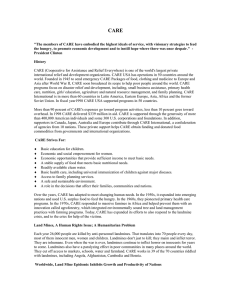
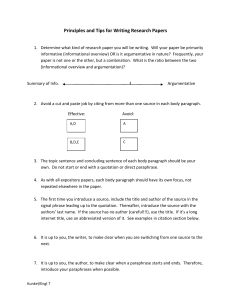
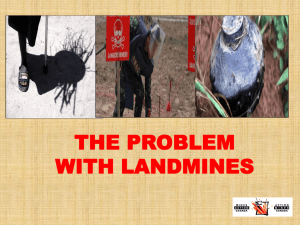
![Water Crisis in Africa (Presentation) [download]](http://s3.studylib.net/store/data/009655902_1-138d767245b04f3c14e51911a4285588-300x300.png)

